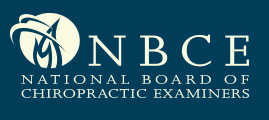Chiropractic Techniques
SOURCE: The Job Analysis of Chiropractic
The following list contains the 15 techniques most frequently used by doctors of chiropractic (DCs).
Although this list is dated, it still accurately reflects the most commonly-used techniques.
The most recent reviews suggest that Instrument Adjusting use is even more common (~46% vs. 34.5%).
These statistics are from the Job Analysis of Chiropractic, created by the National Board of Chiropractic Examiners in January 2000.
Just below the following Table, you will find a brief explanation of each of these manipulative/adjustive procedure.
Every chiropractic college teaches one or more of the following techniques. Most of the rest of them may be offered as Elective Classes, which can be taken by students during their normal 15-week trimester, under the direct supervision of Technique Instructors.
Chiropractic graduates undergo a National Board examination that requires the student to demonstrate competency in the top five manipulative/ adjustive techniques, plus the techniques taught at his/her chiropractic college.
Most Frequently Used Techniques:
| Technique/Procedure | |
| 1. Diversified | |
| 2. Extremity manipulating/adjusting | |
| 3. Activator Methods | |
| 4. Gonstead | |
| 5. Cox Flexion/Distraction | |
| 6. Thompson Technique | |
| 7. Sacro Occipital Technique | |
| 8. Applied Kinesiology | |
| 9. NIMMO/Receptor Tonus | |
| 10. Cranial | |
| 11. Adjustive Instruments | |
| 12. Palmer Upper Cervical | |
| 13. Logan Basic | |
| 14. Meric | |
| 15. Pierce-Stillwagon |
You may also want to visit our:
Chiropractic Technique Page
You will also enjoy Dr. Robert Cooperstein’s fascinating and extensive text:
Brief Definition of These Techniques:
- Diversified Technique – This is a widely used type of chiropractic manipulation/ adjustment that includes most of the procedures taught at chiropractic schools. This technique is the most commonly used of all chiropractic techniques and is the one probably most familiar to patients. The Diversified manipulation/adjustment entails a high-velocity, low-amplitude thrust that usually results in a cavitation of a joint (quick, shallow thrusts that cause the popping noise often associated with a chiropractic manipulation/adjustment).
- Extremity Manipulating/Adjusting – This is the application of chiropractic manipulation/adjustment to joints other than those of the spine, i.e., shoulder, elbow, wrist/hand/finger, hip, knee, ankle/foot/toe. Examples of conditions treated by extremity manipulation/ adjustment: carpal tunnel syndrome, gait, or posture-related problems.
- Activator Method – This is a hand-held, spring-loaded instrument-based manipulation/adjustment protocol. Instead of the manipulating/adjusting forces being delivered by hand, force is generated with the small appliance that delivers a lighter, but quicker, thrust than can be delivered by hand. Activator can be used as a primary treatment protocol for all patients or a selective method for patients who may not desire manual manipulation/adjustment or where manual manipulation/adjustment may be contraindicated.
- Gonstead Technique – This is a specific chiropractic technique that is distinct from Diversified technique because it focuses primarily on P-A adjusting, rather than on rotary adjusting, but is still done by hand, and usually results in joint cavitation. X-ray analysis, palpation, and temperature gradient studies may be used in clinical decision-making (i.e., what segment(s) to manipulate/adjust).
- Cox Flexion/Distraction – This is a specific chiropractic technique that uses mechanical and hands-on manipulation/ adjustment utilizing a special table where the spine is tractioned and flexed forward. This technique is primarily utilized to treat cervical and lumbar disc herniations, non-disc spinal disorders, and to increase mobility of spinal joints.
- Thompson Technique – This is a specific chiropractic method and is a variation of the Diversified technique that uses a special table with several segments called drop pieces. These segments can be cocked up a fraction of an inch, so when the thrust is delivered, the table will drop this fraction of an inch. The object of the drop is to distract (open) the joint during the adjustment. The drop pieces assists the thrust, while minimizing the force required for the adjustment. Cavitation of the joint may or may not occur.
- Sacro Occipital Technique – This is a specific chiropractic technique that uses triangular-shaped blocks usually placed under the pelvis of the prone patient to treat problems identified in the low back. Low force, slow pressure types of manipulations/adjustments may be used to address joint problems identified in the skull.SOT may be used as an exclusive treatment technique or as an adjunct method of patient management.
- Applied Kinesiology – This is an approach to chiropractic treatment in which several specific procedures may be combined. Diversified manipulative/ adjusting techniques may be used with nutritional interventions, together with light massage of various points referred to as neurolymphatic and neurovascular points. Clinical decision-making is often based on testing and evaluating muscle strength.
- NIMMO/Receptor Tonus – This is a specific chiropractic technique based on the presumption that muscles are responsible for causing abnormal joint function. NIMMO addresses muscular problems, usually called trigger points, by applying pressure (referred to as ischemic compression) on the point for variable amounts of time (usually a few seconds) thus allowing the muscle to relax, and re-acquire its normal resting length. This procedure allows the bone(s) to which the muscle(s) attach to move normally to restore proper joint function.
- Cranial Technique – This is not a specific chiropractic technique, but possibly several techniques using the application of chiropractic manipulation/adjustment to joints of the skull (similar to the SOT technique previously mentioned). Since individual anatomy of skull joints is different, the styles of manipulation/ adjustment are different and no cavitation occurs.
- Adjustive Instruments – There are techniques, other than Activator, that include the use of adjusting instruments to deliver the adjustment to the patient. The objective of using an instrument is that you can apply an accurate “line of correction” (or specific vector force) and a controlled force with greater precision, because you are standing in a comfortable position, solely focusing on the adjustment, and not partially focused on maintaining your own posture, as with diversified technique.
- Palmer Upper Cervical – Also referred to as Toggle Recoil, this original upper cervical specific (UC) approach is the basic template for derivative UC techniques that apply high-, low- and no-force thrusts, or instrument-delivered forces for correction. These various techniques focus on joint dysfunctions in the upper cervical spine (C1 and C2). The theory is that treatment of this area may also address problems throughout the entire body. Usually no cavitation occurs. X-ray analysis is commonly used for making clinical decisions (which segment to adjust) and may also rely on static and motion palpation, and thermographic (atlas fossa) analysis.
- Logan Basic – This is a specific chiropractic technique in which light pressure is applied to the ligaments of the sacrum. Light force is concurrently applied to various spinal levels to reduce pain/symptoms and restore muscle balance. This technique is very gentle and effective with children of all ages.
- Meric System – This is not a specific chiropractic technique, but refers more to clinical decision-making regarding what spinal levels to manipulate/adjust. Spinal segments are manipulated/adjusted (usually with a diversified technique) corresponding to the nerves that supply the area of patient symptomatology.
- Pierce-Stillwagon – This is a specific chiropractic technique that uses supine and prone pelvic adjusting on a drop table, and prone or sitting instrument adjusting in the cervical region. X-ray analysis (from film, or motion assessment from videofluoroscopic analysis) and thermographic analysis is regularly used for making clinical decisions about which spinal level(s) to adjust.
Distribution Date: August 2003 by the ACA





When looking at this stats, I’d be interested in knowing how many are exclusive. I know its hard to get an answer like that on a poll. But there can’t truly be two 95% on techniques. Can you run a poll asking about the more common or exclusivity of a technique?
Hi Andrew
The overlap of these percentages means that many of the interviewed DCs use more than one technique.
The only truly “exclusive” techniques that I know of are the ones that focus strictly on upper cervical adjusting (UC) such as NUCCA, Blair, or Grostic. I have received referrals from UC doctors who needed support in other spinal regions, when UC care didn’t resolve their patient’s regional complaints.
I’m a Palmer grad, and the “Palmer Package” includes diversified, Palmer upper cervical, Gonstead, Thompson, and some Pierce pelvic as part of the “package”, and 20+ other techniques were readily available as Electives at a reasonable cost, such as NUCCA, Pierce-Stillwagon, Logan Basic, Atlas Orthogonal etc.
I suspect each doctor starts with their favorite technique. The real issue is, if you are not getting dramatic results after a short trial of care (1-2 weeks), how quickly does that doctor switch to another approach?
In reality, every new case is a unique puzzle, and no 2 are alike!